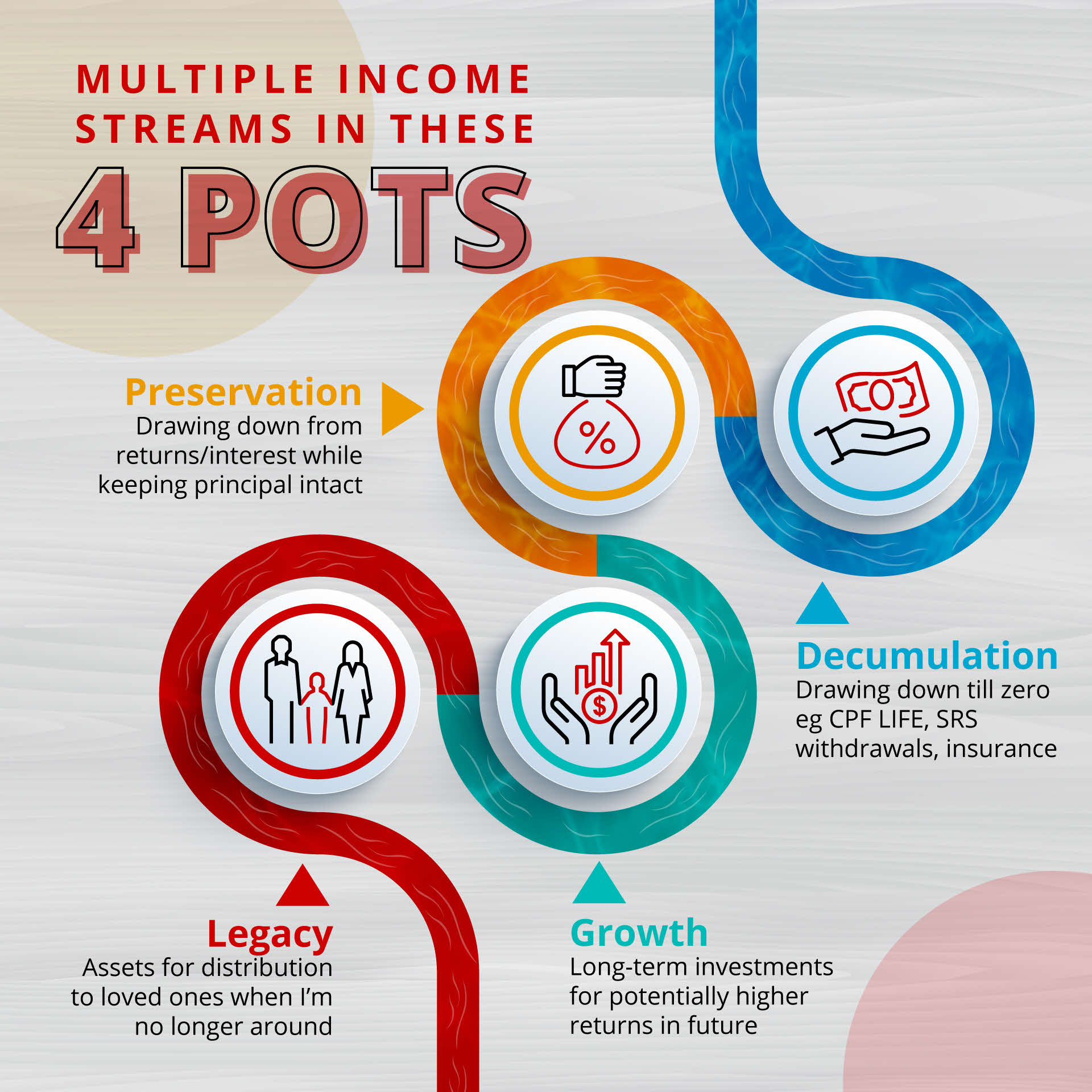Minute to Win It Games for Adults
by Tuula
by Tuula
Does the term ring a bell? It should. From angry politicians to conspiracy theorists throwing around advice telling you to 'open up your eyes', it's hard to miss the whole 'woke culture' that is on the rise. Joining the jargon, woke is now a term, sometimes thrown around out of context.
While half the world revels about being 'woke', the other half is starting to get sick of the woke culture. Once you've reached the end of this piece, you can choose your side. But first up for understanding what this culture is all about.

Woke is a slang term, which didn't start out as one. It took birth in a dialect called African American Vernacular English (AAVE). In AAVE, awake is often rendered as woke.
The term of staying woke became a watchword in parts of the black community for those who were self-aware and for those who questioned the dominant paradigm and strived for something better. "Woke" can also refer, mockingly, to a white person whose perspectives on race equity change suddenly after learning about historical injustice.
It was popularized as a call to action that went hand in hand with the black lives matter movement. However, the idea of getting (and staying) "woke" has taken on a different, more complex meaning since it first began to spread across social media.
By the year 2010, woke became a term that was closely associated with left-wing politics, socially liberal causes, feminism, LGBT activism, and cultural issues, race equity culture issues, and more. This brings one to the current millennial interpretation of this slang term.
Definition in oxford dictionary says 'Alert to injustice in society, especially racism.', to 'The act of being very pretentious about how much you care about a social issue' as defined in the urban dictionary. Well, this says a lot about woke culture.
The Baby Boomers may grumble about these new terms that are taking over social media. However, 'woke' is anything but new. While the term may have recently gained popularity, the very behavior of being woke has been around for a long long time. If you've been frequenting social media and have been a spectator or a participant in the tizzy of information that engulfs you once you log in, then you aren't a stranger to the woke culture.
If you want to give the nerdy side of the cerebrum something to do, check up a dictionary. The literal meaning of the term 'woke' is a person who is awake. But they haven't just woken up now, it's been a while. The process is complete. They've gotten up from the slumber and are now aware and conscious. They are aware! Vigilant! These are the guys who can think for themselves. They can question the crap going on.
If you're seeing all these articles about woke culture, but you haven't the least clue what it means, it's normal! Have you been questioning societal norms and the existing paradigms that plague your every-days? Are you being vocal about these and refusing to take any shit? Congrats! You have been 'woke' all this time without even realizing it. The term 'woke' has evolved from being a common adjective to now identifying what a person stands for.
Why would someone be sick of the woke culture? Detest being fancied for being ever so smart and fluent in all the languages of social media? Feel nauseous at the thought of knowing the origins of every single goddamn policy on the Internet? Of being the lead in a protest, or a group leader when it comes to changing the world? If the perks of being a woke person are so fascinating, why then are people sick of the woke culture?
It's because the term 'woke' is losing its meaning. The term is being sloganised by a cult of social justice. Being woke is being inherently connected to the identitarian left.
Rather than confronting bad ideas or race equity culture issues through discussion, debate or protest, woke people aim now to intimidate their detractors into silence. This coupled with speeches of hate, and forcing their illiberal ideologies on others, is what sums up the woke culture of today.
What is more, is that this set of 'woke' individuals smell out the injustice and prejudice even where they do not exist! They crave conflict and will go to any lengths to achieve it. 'What is woke culture today?' Well, certainly not what it was intended to be. One can even say that these people enjoy concocting issues of race equity culture, political correctness, social injustice, racism, and more. This view was strongly voiced by Former President Barack Obama.
Yes, Former President Barack Obama told youngsters that the 'world is messy'. In his words "'woke' is described as being alert to racial or social discrimination and injustice. This along with being aware of what's going on in the community. I get a sense among certain young people on social media that the way of making change is to be as judgmental as possible about other people. If I tweet or hashtag about how you didn't do something right or used the wrong verb, then I can sit back and feel pretty good about myself because 'Man did you see how woke I was? I called you out!' That's enough, if all you're doing is casting stones, you are probably not going to get that far."
This isn't the first time Former President Barack Obama has spoken on the issue.
Last April, he told a crowd at an Obama Foundation event in Berlin: "One of the things I do worry about among progressives in the United States, maybe it's true here as well, is a certain kind of rigidity where we say 'Uh, I'm sorry, this is how it's going to be' and then we start sometimes creating what's called a 'circular firing squad', where you start shooting at your allies because one of them has strayed from purity on the issues." If you too feel the woke culture is beginning to turn disgusting, maybe it's time to scrap it and let the reign of the Cancel culture take over.

Cancel culture refers to the recent emerging popular practice of withdrawing support. Public figures and companies are 'canceled' after they have done or said something considered objectionable or offensive. Cancel culture is generally discussed as being performed on social media in the form of group shaming.
How is this different from the woke culture? While the woke culture involves people raising their voice and demanding an answer, the cancel culture involves boycotts. This is a familiar pattern that has become a trend when a political figure or a celebrity does something offensive. If it is not in keeping with the generations' ideologies. This public backlash is fueled by politically progressive social media and then goes to 'cancel' the person, thus ending their career. A simple boycotting of their work is the most common way to do it.
People are made more intolerant by the cancel culture. This is a complaint that is often made by the main critiques of cancel culture. Those who follow this culture, are quick to judge and banish those who even slightly disagree with them. Critics say that this does not leave room for constructive discourse. Because social media users often deliver a quick verdict, based on a snap judgment. This leaves no opportunity for the 'canceled' person to explain themselves and make their case against their own 'cancellation.'
This causes a tug-of-war situation. One group being those trying to make room for discussion between people with opposing viewpoints. The other being those not wanting to compromise their principles by engaging with a celebrity they view as problematic.
If you're racking your brain for examples through history, who have had to face the wrath of the cancel culture, here are some. In 2019 alone, the list of people who've faced being canceled included alleged sexual predators like R. Kelly; entertainers like Kanye West, Scarlett Johansson, and Gina Rodriguez, who all had offensive foot-in-mouth moments; and comedians like Kevin Hart and Shane Gillis, who each faced public backlash after social media users unearthed homophobic and racist jokes they'd made in the past.
However, if it was this easy to end someone's career over social media backlash, several notable figures would find their work down the drain. But, some of those who did face this career crisis, rose from the ashes and made their name once again. For example, in 2019, Kevin Hart withdrew himself from hosting the Oscars, but his movies and stand-up specials were still successful after the backlash against him died down.
Gillis was swiftly dropped from the cast of Saturday Night Live over his offensive humor, but he's since been greeted warmly by crowds at comedy shows, defended by fellow comedians like Ricky Gervais and David Spade, and invited for a heart to heart with Democratic presidential candidate Andrew Yang - turning his use of racial slurs into a teachable moment.
Taylor Swift has been a victim of the effects of this culture. In 2016, Kanye West released his song Famous which had lyrics with references to having sex with Taylor. Swift, of course, did not approve. However, Kim K posted a video, which claimed to show the opposite. Swift was then targeted by a campaign to 'cancel' her.
"A mass public shaming, with millions of people saying you are quote-unquote canceled, is a very isolating experience," she admitted. "I don't think there are that many people who can actually understand what it's like to have millions of people hate you very loudly. When you say someone is canceled, it's not a TV show. It's a human being. You're sending mass amounts of messaging to this person to either shut up, disappear, or it could also be perceived as Kill yourself."
"I realized I needed to restructure my life because it felt completely out of control," she said in an interview to Vogue magazine. "I knew immediately I needed to make music about it because I knew it was the only way I could survive it. It was the only way I could preserve my mental health and also tell the story of what it's like to go through something so humiliating."
The row gained a lot of attention across the media and led to hashtags including #TaylorSwiftIsCancelled.
El Jones, an instructor of social justice and community studies at Saint Mary's University in Halifax, said "Cancel culture can be good when it takes somebody powerful off of a pedestal, especially if they have a pattern of harmful behavior and are likely to cause more harm. It can sometimes "go too far" in certain cases when people cancel someone for a first-time mistake because it doesn't allow them to learn and grow." She instead says that there is nothing wrong, with admitting a mistake and moving on.
"If someone calls you out, it's important to not take it personally. There's nothing shameful about being wrong. Often when we make a mistake, we get defensive because we feel like someone is telling us we're a bad person. It's important to take a deep breath, listen to what people are saying to you and be willing to say sorry and learn from it."
She says if you're the one calling someone out, "It's always best to approach them in a way that is helpful and makes them feel like you're on their side. We can do it in ways that are very gentle and helpful because sometimes people just don't know that what they did is wrong."
When photos of Ellen DeGeneres' photos at a sports game with known homophobe George Bush went viral on social media, her fans started calling her out for being a hypocrite. This was because while being a supporter of gay rights, she was also fraternizing with a former politician who actively advocated for people like DeGeneres not to have civil rights. The social media users called her out. However, DeGeneres advocated for universal kindness and brushed off her critics to be a bunch of over-sensitive Twitter snowflakes.
Is cancel culture or woke culture the new norms? We may never know. They might just die down like many other trends, or they may be here to stay awhile. Whatever the case, if you don't want to be dragged into the controversies of the two, and neither be a silent spectator, here's a thought.
When you see something on social media, which doesn't quite fit your norms, instead of waging a war against it instantly, take a moment to think if it is impacting someone in a hurtful way. If it is, then yes, go ahead and call out the person. But if it is just someone's personal choices you are criticizing, then it may be time for you to step back and follow the adage of living and let live.
We include products we think are useful for our readers. If you buy through links on this page, we may earn a small commission Here's our process.
Bread has been a staple food around the world for thousands of years. People continue to consume it because of its convenience, portability, nutrition, and taste.
There are many different types of bread, which people make in different ways, using a variety of ingredients. Examples include whole-grain bread, sweetened bread, cornbread, leavened and unleavened bread, flatbread, sourdough, sprouted grain bread, soda bread, and many more.
Some types of bread are more nutritious than others, but how do people make a healthful choice?
This article looks at some aspects of bread that may make one type of bread more or less healthful than another.

Carbohydrates are the primary nutrient in bread. Carbohydrates provide the body with fuel.
Fruits, vegetables, beans, and minimally processed grains contain the most healthful dietary sources of carbohydrates. These foods also provide vitamins, minerals, fiber, and antioxidants.
People make packaged and presliced white bread from a highly processed, simple carbohydrate. It is quick and easy to digest but has little nutritional value.
Foods made from highly processed grains cause blood sugar to spike soon after eating. Frequent blood sugar spikes can eventually contribute to the development of type 2 diabetes.
Processed carbs also lack fiber. As a result, a person will not feel full after eating them. They will crave more food again soon after, especially when the blood sugar drops.
When manufacturers process foods, it often results in the loss of nutrients. The producers often add vitamins and minerals to white bread to replace these missing nutrients. However, they cannot replace the fiber, which is essential for digestive and cardiovascular health.
A high intake of simple carbohydrates, such as premade white bread, can lead to weight gain and a higher risk for diabetes, heart disease, and other lifestyle-related chronic conditions.
The whole grains in wholemeal bread have many benefits. They can boost overall health and help reduce the risk of obesity and various other complications and diseases.
The Whole Grains Council define whole foods as follows:
"Whole grains or foods made from them contain all the essential parts and naturally-occurring nutrients of the entire grain seed in their original proportions. If the grain has been processed (e.g., cracked, crushed, rolled, extruded, or cooked), the food product should deliver the same rich balance of nutrients that are found in the original grain seed. This definition means that 100% of the original kernel — all of the bran, germ, and endosperm — must be present to qualify as a whole grain."
The
The AHA recommend consuming at least 25 grams (g) of fiber a day for a person on a 2,000-calorie a day diet. At least half of the grains a person consumes should be whole grains.
Fiber can reduce the risk of:
Whole grains also provide protein.
When choosing store bought bread, the word "whole" should be the first word in the ingredient list. The word "whole" ensures that all three parts of the grain — the bran, the germ, and the endosperm — are present in the product.
The following labels do not guarantee a whole-grain product:
The ingredient list will give a better idea of what the product contains.
Whole-grain bread is available in grocery stores and online.
To make white bread or white flour, manufacturers process the grain to remove the bran and the germ, leaving only the endosperm.
Products made with refined flour have a finer, lighter texture and usually have a longer shelf life.
However, processing removes most or all of the fiber, vitamins, and minerals. The remaining endosperm provides quick, easily digestible carbohydrates but little else.
This can lead to nutritional deficiencies, so manufacturers now produce "enriched" flours.
They add back some of the missing nutrients to the processed white flour, using supplements, such as folic acid and other B vitamins.
However, supplemental vitamins are not as good as vitamins that come naturally from food sources. Usually, the human body can better absorb and process nutrients from unprocessed sources.
The highly processed flour and additives in white, packaged bread can make it unhealthful. Consuming too much white bread can contribute to obesity, heart disease, and diabetes.
However, buying bread with the word "whole" as the first ingredient still does not guarantee a healthful product. It is only the first step.
Even whole-grain bread can contain 20 or more ingredients, including preservatives and added salt and sugars. Not all of these contribute to good health.
Preservatives may help bread stay fresh for longer, but people can store fresh bread that contains fewer preservatives in the refrigerator or freezer to maintain freshness.
Many types of bread contain added sugars or sugar substitutes. People should avoid those with corn syrup or any that contain ingredients ending in "-ose" listed at the beginning of the ingredient list because these are all sugars. Examples include sucrose, glucose, and fructose.
Manufacturers typically order an ingredients list according to the weight of ingredients in the product. Ingredients that appear near the top of the list will be present in relatively high proportions.
Bread made with sprouted grains is a good option. When a grain is sprouted, its nutrients become easier to digest and more available to the body for use. It can be a better source of protein, fiber, vitamin C, folate, and other nutrients.
Ezekiel bread is a type of high fiber bread made with only sprouted grains and no flour. People should keep sprouted grain bread in the refrigerator or freezer.
Ezekiel bread is available for purchase online.
Learn more here about Ezekiel bread and other foods that can help people with diabetes.
Some people should avoid bread because of an allergy or intolerance.
In recent years, the gluten free diet has become popular.
A person with celiac disease has a severe autoimmune reaction to gluten that causes intestinal damage, so eating gluten can be very dangerous.
However, many people can tolerate gluten, and they do not need to avoid it.
Scientists have shown that avoiding gluten can cause people to stop eating foods that may be healthful for them, such as whole grains.
A 2017
People who need to avoid gluten can find gluten free bread in many grocery stores or purchase it online.
Is it a good idea to go gluten free if you don't have celiac disease? Learn more here.
Some people have a sensitivity or allergy to wheat but not to gluten.
People who have a wheat allergy should not eat bread containing wheat flour, but they can choose those made from rye or other types of flour.
Some people are not allergic to wheat, but they have a wheat intolerance.
When a person with a wheat intolerance consumes wheat, they might feel bloated and uncomfortable. Eating wheat bread is not dangerous for people with a wheat intolerance, but choosing rye or other types of bread can reduce discomfort.
If a person with an allergy consumes a product they are allergic to, this can, in some cases, lead to anaphylactic shock. Symptoms include a rash, swelling, and difficulty breathing. Anyone who experiences these symptoms needs immediate medical attention, as anaphylaxis can be life threatening.
Do you know how to recognize anaphylaxis and what to do if it happens? Find out here.
Consuming wholemeal bread in moderation should not cause weight gain, but it will provide the necessary energy for the body.
However, a person who wishes to manage their weight or lose weight should consider the following points:
Taking in more calories than the body needs for energy will lead to weight gain.
If bread becomes a default meal or snack, it can crowd out more healthful foods.
White bread sandwiches that contain processed meat, butter, and mayonnaise can add many unnecessary calories by increasing fat and carbohydrate intake.
Whole-grain bread can be a healthful option for people who wish to lose weight, but it depends on how they include bread in the diet.
A healthful option might be:
Can I eat bread if I have diabetes? Find out here.
Fresh Food Fast: Cold Soba Noodles
There are many types of bread, and some are more healthful than others.
Try making bread at home. This way, you will know exactly what you are eating. Some people may choose to invest in a bread making machine.
Overall, whole-grain bread is a healthful product, as long as a person consumes it in moderation and does not have an allergy or an intolerance.
Last medically reviewed on November 6, 2019

By Lorna Tan
![]()
If you've only got a minute:
![]()
As my financial knowledge and experiences grow over time, my beliefs on how to achieve sustainable financial wellness have also evolved.
The main objective is to enjoy my retirement or financial freedom phase without worrying about running out of money before I run out of time. I also want to strike a balance between spending too much to the point that I outlive my nest egg, and under spending at the risk of not enjoying my hard-earned savings fully.
To ensure that I have enough to last my lifetime, I have to work out my "Must-Have Income Floor" (MIF) and stress-test it with different inflation projections.
I've realised that to help me sleep soundly each night, I need to have some lifelong income streams as well as investments that will keep my principal amount intact while I spend on the interest or returns.

To fund a comfortable retirement that can mitigate inflation, longevity and investing risks, building passive income flows is the way to go. In fact, the multiple income streams that I've built sit in these 4 pots:
Furthermore, retiring well requires more than just achieving the financial numbers. As a disciplined saver, I'm mindful that the shift from a savings mode to that of spending will be difficult. Boosting mental resilience through engaging in meaningful activities during retirement and staying physically healthy are also important.

So, how do I create a robust retirement plan that ticks all the boxes?
Here's a peek at 10 guiding principles for my retirement.
1. Understand my retirement lifestyle
Retirement planning starts with understanding the lifestyle we desire. When I first started visualising my retirement, I was in my 30s. Being "kiasu" and not knowing what the future holds, I decided to quantify what it means to retire under these 3 lifestyles: Basic, Moderate and Luxury.
2. Quantify expenses
For each lifestyle, I worked out my needs and wants and quantified the expenses. I reviewed this regularly, stress-tested it with inflation assumptions, and made adjustments along the way. Sometimes, a "want" makes its way into my "needs" list, as my standard of living increased over the years. Such an exercise offers clarity on which lifestyle is achievable and I have a better idea on when I can reach financial freedom.
3. Work out my "Must-Have Income Floor" (MIF)
This is the minimum monthly income that I have determined as my MIF during retirement.
Since it is a "must-have" amount, it should ideally be funded via more stable and guaranteed income flows, regardless of the state of the economy and market performance.

I realised that the older I get, the more risk averse I become. Although I have the capacity and capability to take more investment risk, the need to do so reduces over the years as more wealth is accumulated. This lower risk profile is reflected in a higher MIF, compared to that in my younger years. It will definitely cover all of my needs and as I've become more conservative, this figure will cover some of my wants too.
Do note that to achieve my desired higher MIF, I have to accumulate sufficient financial resources to invest in "safer" products. This is reflected in a higher concentration in fixed income products in my portfolio as I got older.
4. Build multiple income flows
Do not depend on a "magic retirement" lumpsum to draw down from during retirement. To counter the risks most retirees face, it is more sustainable to build multiple income flows to fund our golden years.
For instance, the more guaranteed income flows like CPF LIFE payouts can be used to fund our MIF while the variable income flows from riskier products can fund the amount in excess of MIF or our wants.
Reviewing our retirement plan regularly will help guide the allocation of our savings into different investment products to achieve our objectives.
5. Build lifelong and long-term income streams
To fund my MIF in a sustainable matter, some of my multiple income flows will comprise lifelong cashflows such as payouts from CPF LIFE and a private annuity plan.
Other income streams are for the long-term. They include SRS withdrawals that last for up to 10 years and payouts from retirement income insurance for a specified period of say 20 years. These will come in handy during the first phase of your retirement when you are still physically mobile and are likely to travel more, set up a business or pursue hobbies.
6. Build Income streams that preserve principal
In addition, I invested in a few income instruments that offer decent returns/income to fund my retirement while keeping my principal intact.
They include the annual 4% interest from my CPF Special Account (SA) savings (as I shielded my CPF SA just before I turned 55), coupons from the 50-year Green Singapore Government Securities and bond funds (like Singapore Savings Bonds, Astrea bonds and corporate bonds), dividends from Reits and blue-chip stocks, payouts from income funds, and rental income.
7. Continue investing during retirement
Come 2030, one in four Singaporeans will be aged 65 and older. A longer lifespan translates to more years in retirement. Imagine working for 35-40 years to fund potentially 40 years or more in retirement!

This is why we need to continue investing during retirement to grow our assets. We can do so via a portfolio - of stocks, index funds, ETFs and/or unit trusts - that offers variable but potentially
higher returns for income growth by riding out the market volatility over time.
8. Ensure healthcare and long-term care protection
Statistics showed that 1 in 2 healthy Singaporeans aged 65 could become severely disabled in their lifetime. And about 3 in 10 will live a decade or more after becoming severely disabled.
As such, I have to ensure I can continue to afford the premiums of my private hospitalisation Integrated Shield Plan and CareShield Life plan during my lifetime.
9. Build a sound estate plan
The investments that help preserve my principal amounts will offer flexibility and a buffer in the face of potential curveballs, such as a medical crisis, black swan events and persistent high inflationary environment, in retirement.
These investments as well as assets that are unused in my lifetime will form part of my estate when I am no longer around. To have an efficient distribution to intended beneficiaries, I have set up an estate plan through common tools such as a will and CPF nomination.
I have also done up my Lasting Power of Attorney which can be activated should I become mentally incapacitated.
10. Have a purposeful retirement
How do I lead a meaningful life in retirement?
Without proper preparation, some retirees find themselves having to cope with a sense of emptiness and loss of identity, especially during the first few years of their retirement.

This is why we have to be clear on what our life purpose is even before we retire and continue to live meaningfully, supported by our financial resources.
One aspect of retiring is that we will have more control of time. This has to be balanced with discipline and structure. As such, I will continue to keep my weekdays separated from my weekends. And my daily routine will be adjusted to discover new things, volunteer, participate in financial literacy efforts, building memories with loved ones, and exercise.
In summary
There is no one single solution that suits everyone because what gives me a better peace of mind will be different for another individual.
If you are constrained by limited savings, all the more you should maximise government schemes like the CPF and leverage the magic of compounding to grow your nest egg. At the same time, ensure you make the right big decisions like not overpaying for your home.
For those who have surplus cash after setting aside an emergency fund and adequate protection, do invest wisely and build multiple income flows as retirement draws near.
Retiring comfortably is within reach of all of us. But we have to take the first step. And it starts with us taking the responsibility and making retirement planning a key priority.
The choice is yours.
Speak to the Wealth Planning Manager today for a financial health check and how you can better plan your finances.
Start planning for retirement by viewing your cashflow projection on DBS NAV Planner. See your finances 10, 20 and even 40 years ahead to see what gaps and opportunities you need to work on.
Disclaimers and Important Notice
This article is meant for information only and should not be relied upon as financial advice. Before making any decision to buy, sell or hold any investment or insurance product, you should seek advice from a financial adviser regarding its suitability.